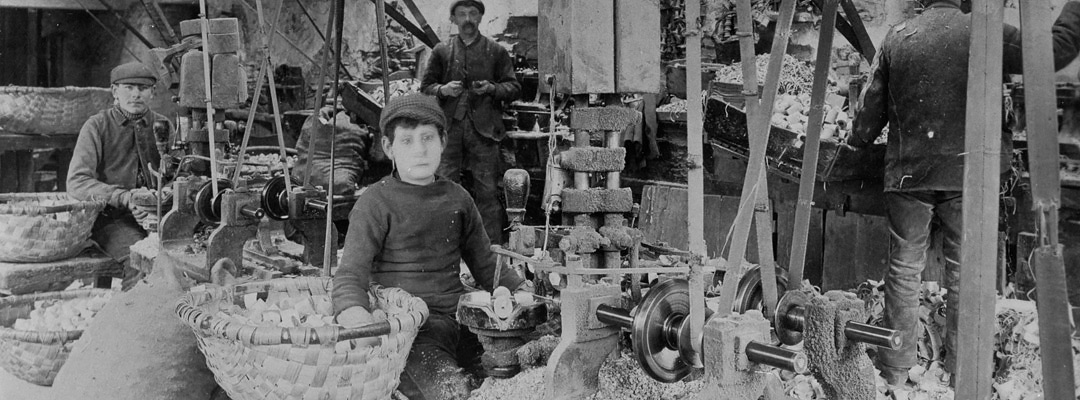Child Labour in the Lake District
Stott Park Bobbin Mill is located in an idyllic spot, but life was far from ideal for the ‘bobbin boys’ who worked there in the 19th century.

A FATAL ERRAND
On 29 November 1849 Kit Cloudesdale, a 13-year-old apprentice, was sent from Stott Park Bobbin Mill, Cumbria, on an errand to Force Forge mill, a strenuous journey of several miles over the Fells. Failing to return during extreme weather, he was found four days later near Rusland, dead from hypothermia.
Kit was just one of the scores of child labourers employed by the bobbin mill from the day it opened its doors in 1835.
VORACIOUS MILLS
The Lake District became a centre of manufacture for wooden bobbins, to help slake the insatiable demand from the huge cotton spinning and weaving machines that filled the enormous mills of Lancashire.
This Lakeland industry played just a small part in the massive upheaval of the population of England during the Industrial Revolution. People flocked to the mills where labour was cheap and plentiful, and included hundreds of children.
DANGEROUS WORK
Even though the Factory Act of 1833 had led to some improvements in conditions for the children who worked in the textile mills and factories, it was still legal to employ children as young as nine to work nine hours a day. Although subsequent acts made small improvements, apprentice boys as young as ten continued to work long hours in the Lake District bobbin mills throughout the century.
Many lived apart from their families. Work in a bobbin mill could be unhealthy and dangerous, with the constant risk of accidents at machines and the danger of developing respiratory diseases caused by continuous exposure to sawdust.
WORKHOUSE RECRUITS
Many children were sent to work in the mills from the notorious workhouses. One such boy was Edward Mashiter, who came to Stott Park from Ulverston Workhouse in 1865. Edward was a destitute boy of 12, separated from his family, though his older brother John was placed with a blacksmith at nearby Newby Bridge.
Having served an apprenticeship of six years, Edward continued at his trade until 1930, while his son, Thomas Edward Mashiter, followed him into the mill, working until 1937.
LONG SERVICE
But the service record must go to Charles Jackson, bound as an apprentice at the age of 14 in December 1839.
During Charles’s seven-year apprenticeship his father was paid £3 a year for the first six years and £5 in the final year, while Charles was provided with ‘good, suitable and sufficient meat, drink, board lodgings and washing’ by his masters. In return Charles undertook ‘to be faithful and loyal, not to play cards, dice or any other unlawful games, not to visit taverns or alehouses and not to cheat his masters’.
Charles spent his whole working life at Stott Park Bobbin Mill. He was still employed when he died in 1907, 68 years after he began.
By Paul Pattison
Find out more
-

History of Stott Park Bobbin Mill
Read a full history of Stott Park, the only surviving example of the Lakeland bobbin mills that once supplied the Lancashire cotton industry.
-

Feeding the Textile Industry: From Coppice to Bobbin
Explore Stott Park Bobbin Mill with this virtual tour on Google Arts and Culture.
-

Plan your visit
Experience the Industrial Revolution brought to life at the mill, where you can see demonstrations of bobbin making as part of a guided tour.
-

Spotlight on Stott Park
Discover what makes Stott Park – the only working bobbin mill left in the Lake District – so different from other English Heritage sites.